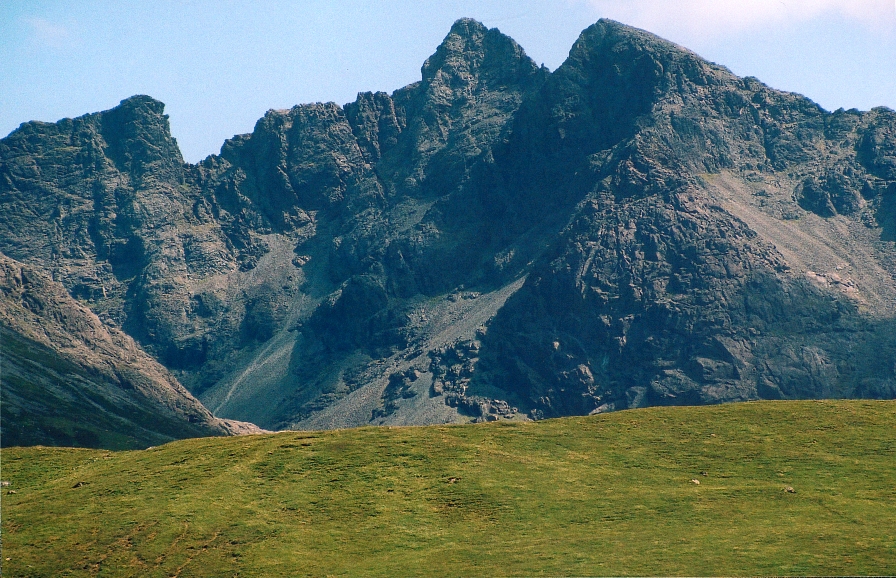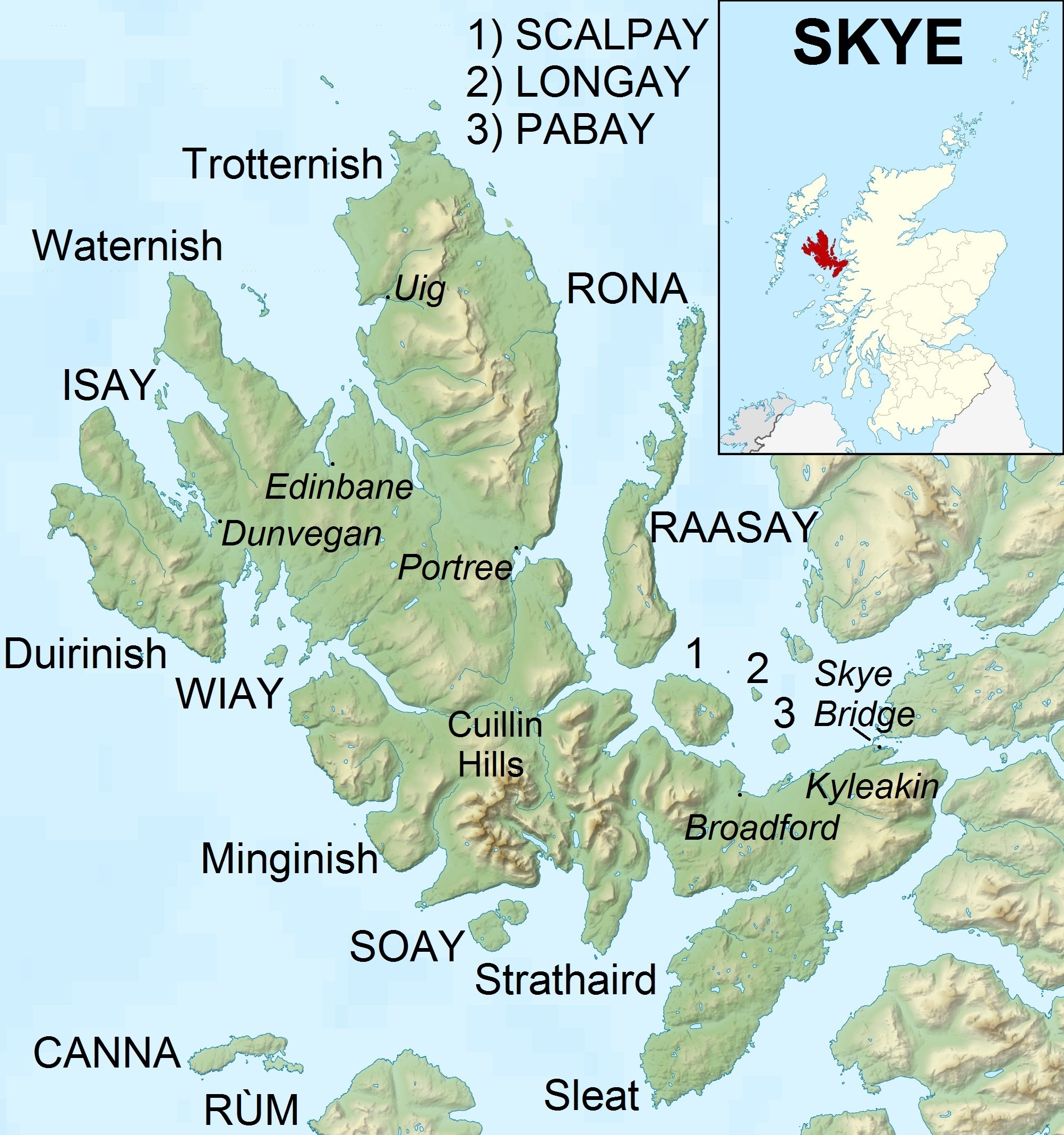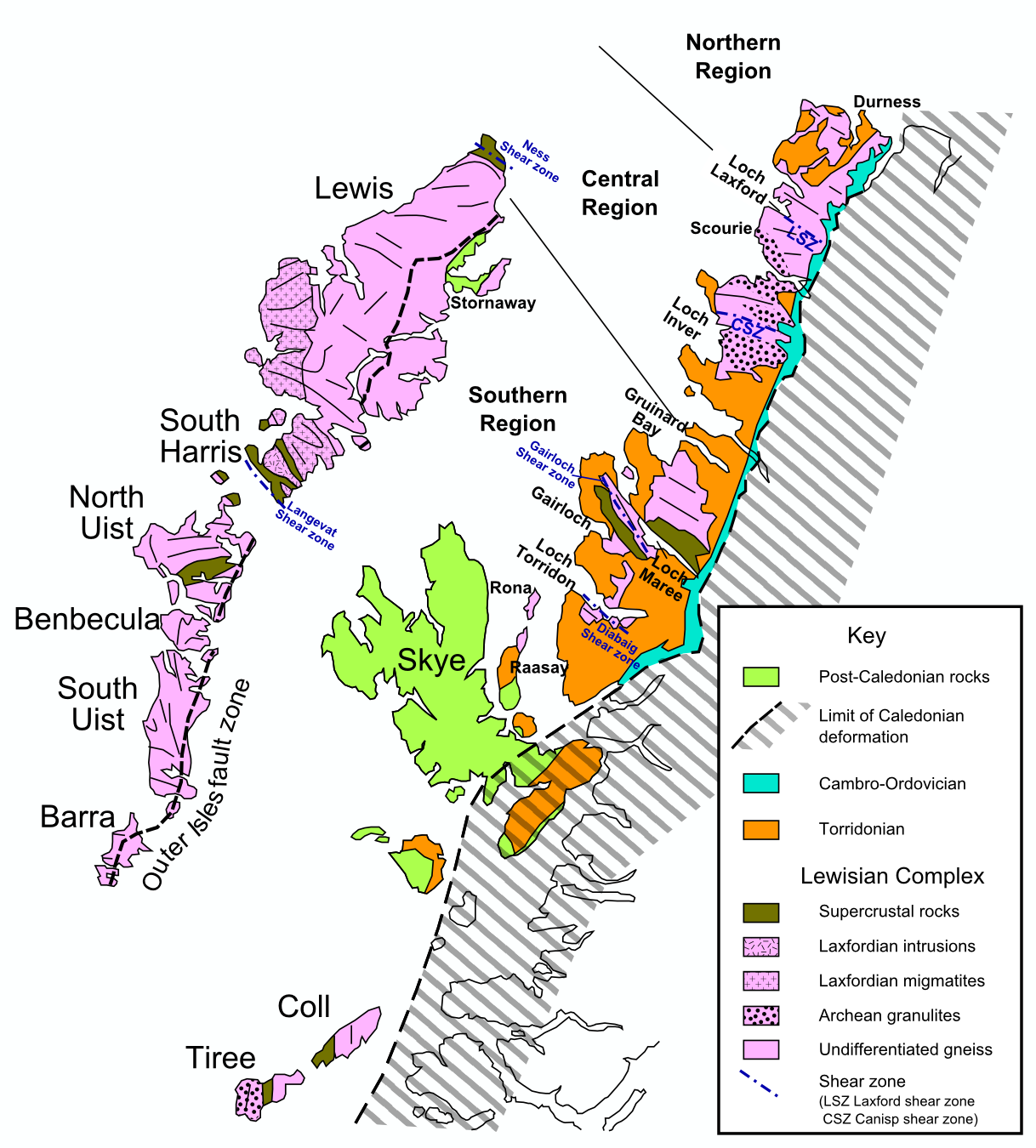|
Hebrides
The Hebrides ( ; , ; ) are the largest archipelago in the United Kingdom, off the west coast of the Scotland, Scottish mainland. The islands fall into two main groups, based on their proximity to the mainland: the Inner Hebrides, Inner and Outer Hebrides. These islands have a long history of occupation (dating back to the Mesolithic period), and the culture of the inhabitants has been successively influenced by the cultures of Celtic language, Celtic-speaking, Old Norse language, Norse-speaking, and English language, English-speaking peoples. This diversity is reflected in the various names given to the islands, which are derived from the different languages that have been spoken there at various points in their history. The Hebrides are where much of Scottish Gaelic literature and Gaelic music has historically originated. Today, the economy of the islands is dependent on crofting, fishing, tourism, the oil industry, and renewable energy. The Hebrides have less biodiversity t ... [...More Info...] [...Related Items...] OR: [Wikipedia] [Google] [Baidu] |
Outer Hebrides
The Outer Hebrides ( ) or Western Isles ( , or ), sometimes known as the Long Isle or Long Island (), is an Archipelago, island chain off the west coast of mainland Scotland. It is the longest archipelago in the British Isles. The islands form part of the archipelago of the Hebrides, separated from the Scottish mainland and from the Inner Hebrides by the waters of the Minch, the Little Minch, and the Sea of the Hebrides. The Outer Hebrides are considered to be the traditional heartland of the Gaelic language. The islands form one of the 32 council areas of Scotland, which since 1998 has used only the Gaelic form of its name, including in English language contexts. The council area is called Na h-Eileanan an Iar ('the Western Isles') and its council is ('Council of the Western Isles'). Most of the islands have a bedrock formed from ancient metamorphic rocks, and the climate is mild and oceanic. The 15 inhabited islands had a total population of in and there are more th ... [...More Info...] [...Related Items...] OR: [Wikipedia] [Google] [Baidu] |
Inner Hebrides
The Inner Hebrides ( ; ) is an archipelago off the west coast of mainland Scotland, to the south east of the Outer Hebrides. Together these two island chains form the Hebrides, which experience a mild oceanic climate. The Inner Hebrides comprise 35 inhabited islands as well as 44 uninhabited islands with an area greater than . Skye, Isle of Mull, Mull, and Islay are the three largest, and also have the highest populations. The main commercial activities are tourism, crofting, fishing and Scotch whisky, whisky distilling. In modern times the Inner Hebrides have formed part of two separate local government jurisdictions, one to the north and the other to the south. Together, the islands have an area of about , and had a population of 18,948 in 2011. The population density is therefore about . There are various important prehistoric structures, many of which pre-date the first written references to the islands by Classical antiquity, Roman and Greek authors. In the historic period ... [...More Info...] [...Related Items...] OR: [Wikipedia] [Google] [Baidu] |
Islay
Islay ( ; , ) is the southernmost island of the Inner Hebrides of Scotland. Known as "The Queen of the Hebrides", it lies in Argyll and Bute just south west of Jura, Scotland, Jura and around north of the Northern Irish coast. The island's capital is Bowmore where the distinctive round Kilarrow Parish Church and a distillery are located. Port Ellen is the main port. Islay is the fifth-largest Scottish island and the eighth-largest List of islands of the British Isles, island of the British Isles, with a total area of almost . There is ample evidence of the prehistoric settlement of Islay and the first written reference may have come in the first century AD. The island had become part of the Gaelic Kingdom of Dál Riata during the Scotland in the Early Middle Ages, Early Middle Ages before being absorbed into the Norse Kingdom of the Isles. The later medieval period marked a "cultural high point" with the transfer of the Hebrides to the Kingdom of Scotland and the emergence of ... [...More Info...] [...Related Items...] OR: [Wikipedia] [Google] [Baidu] |
Skye
The Isle of Skye, or simply Skye, is the largest and northernmost of the major islands in the Inner Hebrides of Scotland. The island's peninsulas radiate from a mountainous hub dominated by the Cuillin, the rocky slopes of which provide some of the most dramatic mountain scenery in the country. Slesser (1981) p. 19. Although has been suggested to describe a winged shape, no definitive agreement exists as to the name's origin."Gaelic Culture" . VisitScotland. Retrieved 5 January 2013. The island has been occupied since the period, and over its history has been occupied at various times by Celtic tribes includ ... [...More Info...] [...Related Items...] OR: [Wikipedia] [Google] [Baidu] |
Sea Of The Hebrides
The Sea of the Hebrides (, ) is a small and partly sheltered section of the North Atlantic Ocean, indirectly off the southern part of the north-west coast of Scotland. To the east are the mainland of Scotland and the northern Inner Hebrides (including Skye and the Small Isles); to the west are the southern Outer Hebrides islands, principally South Uist, Eriskay, and Barra. To the north is the Little Minch, a channel connecting it with the Minch. The Sea of the Hebrides forms part of the Inner Seas off the West Coast of Scotland, as defined by the International Hydrographic Organization, and part of the Seas west of Scotland as far as fisheries management is concerned. Ending on 30 August 2019, the Scottish Government consulted on a proposal to designate the Sea of the Hebrides a Marine Protected Area (MPA). The designation was confirmed in December 2020. The designated area of the MPA covers , mainly to protect the area's population of basking sharks The basking shar ... [...More Info...] [...Related Items...] OR: [Wikipedia] [Google] [Baidu] |
Staffa
Staffa (, , from the Old Norse for stave or pillar island) is an island of the Inner Hebrides in Argyll and Bute, Scotland. The Vikings gave it this name as its columnar basalt reminded them of their houses, which were built from vertically placed tree-logs. Staffa lies about west of the Isle of Mull; its area is and the highest point is above sea level. The island came to prominence in the late 18th century after a visit by Sir Joseph Banks. He and his fellow-travellers extolled the natural beauty of the basalt columns in general and of the island's main sea cavern, which Banks renamed 'Fingal's Cave'. Their visit was followed by those of many other prominent personalities throughout the next two centuries, including Queen Victoria and Felix Mendelssohn. The latter's '' Hebrides Overture'' brought further fame to the island, which was by then uninhabited. It is now in the care of the National Trust for Scotland. Geology and pre-history In prehistoric times (Pleistocene) ... [...More Info...] [...Related Items...] OR: [Wikipedia] [Google] [Baidu] |
Scotland
Scotland is a Countries of the United Kingdom, country that is part of the United Kingdom. It contains nearly one-third of the United Kingdom's land area, consisting of the northern part of the island of Great Britain and more than 790 adjacent Islands of Scotland, islands, principally in the archipelagos of the Hebrides and the Northern Isles. To the south-east, Scotland has its Anglo-Scottish border, only land border, which is long and shared with England; the country is surrounded by the Atlantic Ocean to the north and west, the North Sea to the north-east and east, and the Irish Sea to the south. The population in 2022 was 5,439,842. Edinburgh is the capital and Glasgow is the most populous of the cities of Scotland. The Kingdom of Scotland emerged as an independent sovereign state in the 9th century. In 1603, James VI succeeded to the thrones of Kingdom of England, England and Kingdom of Ireland, Ireland, forming a personal union of the Union of the Crowns, three kingdo ... [...More Info...] [...Related Items...] OR: [Wikipedia] [Google] [Baidu] |
Lewisian Complex
The Lewisian complex or Lewisian gneiss is a suite of Precambrian metamorphic rocks that outcrop in the northwestern part of Scotland, forming part of the Hebridean terrane and the North Atlantic craton, North Atlantic Craton. These rocks are of Archean, Archaean and Paleoproterozoic age, ranging from 3.0–1.7 billion years (Year#SI prefix multipliers, Ga). They form the Basement (geology), basement on which the Stoer Group, Wester Ross Supergroup and probably the Loch Ness Supergroup sediments were deposited. The Lewisian consists mainly of Granite, granitic gneisses with a minor amount of supracrustal rocks. Rocks of the Lewisian complex were caught up in the Caledonian orogeny, appearing in the hanging walls of many of the thrust faults formed during the late stages of this tectonic event. Distribution The main outcrops of the Lewisian complex are on the islands of the Outer Hebrides, including Isle of Lewis, Lewis, from which the complex takes its name. It is also exp ... [...More Info...] [...Related Items...] OR: [Wikipedia] [Google] [Baidu] |
Jura, Scotland
Jura ( ; ) is an island in the Inner Hebrides of Scotland, adjacent to and northeast of Islay. With an area of , and 196 inhabitants recorded in the 2011 census, Jura is more sparsely populated than Islay, and is one of the least densely populated islands of Scotland: in a list of the islands of Scotland ranked by size, Jura comes eighth, whereas by population it comes 31st. The island is mountainous, bare and largely infertile, covered by extensive areas of blanket bog. The main settlement is the east coast village of Craighouse, on the Sound of Jura. The Jura distillery, producing Isle of Jura single malt whisky, is in the village, as is the island's rum distillery which opened in 2021. Craighouse also houses the island's shop, church, primary school, the Jura hotel and bar, a gallery, craft shop, tearoom and the community run petrol pumps. North of Craighouse are a number of other small settlements on or near the east coast: Keils, Knockrome, Ardfernal, Lagg, Jura, Lagg, Tarb ... [...More Info...] [...Related Items...] OR: [Wikipedia] [Google] [Baidu] |
Isle Of Mull
The Isle of Mull or simply Mull ( ) is the second-largest island of the Inner Hebrides (after Skye) and lies off the west coast of Scotland in the Council areas of Scotland, council area of Argyll and Bute. Covering , Mull is the fourth-largest island in Scotland. From 2001 to 2020, the population has gradually increased: during 2020 it was estimated to be 3,000, in the United Kingdom Census 2011, 2011 census it was about 2,800, and in 2001, it was measured at 2,667 people. It has the eighth largest island population in Scotland. In the summer, these numbers are augmented by an influx of many tourists. Much of the year-round population lives in the colourful main settlement of Tobermory, Mull, Tobermory. There are two distilleries on the island: the Tobermory distillery, formerly named Ledaig, produces single malt Scotch whisky and another, opened in 2019 and located in the vicinity of Tiroran, which produces Whitetail Gin. Mull is host to numerous sports competitions, nota ... [...More Info...] [...Related Items...] OR: [Wikipedia] [Google] [Baidu] |
Raasay
Raasay (; ), sometimes the Isle of Raasay, is an island between the Isle of Skye and the mainland of Scotland. It is separated from Skye by the Sound of Raasay and from Applecross by the Inner Sound, Scotland, Inner Sound. It is famous for being the birthplace of Scottish Gaelic literature, Gaelic poet Sorley MacLean, an important figure in the Scottish Renaissance. Traditionally the home of Clan Sweeney, Clan MacSween, the island was ruled by the Clan MacLeod, MacLeods from the 15th to the 19th century. Subsequently, a series of private landlords held title to the island, which is now largely in public ownership. Raasay House, which was visited by James Boswell and Samuel Johnson in 1773, is now a hotel, restaurant, bar and outdoor activity centre. Raasay means "Isle of the Roe Deer" and the island is home to an endemism, endemic subspecies of bank vole. Geology and geography About north to south and east to west (at its widest), Raasay's terrain is varied. The high ... [...More Info...] [...Related Items...] OR: [Wikipedia] [Google] [Baidu] |
The Minch
The Minch () is a strait in north-west Scotland that separates the mainland from Lewis and Harris in the Outer Hebrides. It was known as ("Scotland's firth") in Old Norse. The Minch's southern extension, which separates Skye from the middle islands of the Hebridean chain, is known as the Little Minch. It opens into the Sea of the Hebrides. Geography The Minch and Little Minch form part of the Inner Seas off the West Coast of Scotland, as defined by the International Hydrographic Organization. The Minch ranges from wide and is approximately long. It is believed to be the site of the biggest meteorite ever to hit the British Isles. The Little Minch is about wide. In June 2010 Eilidh Macdonald became the first person to swim across it from Waternish Point on Skye to Rodel on Harris, in a time of hours. Navigation A traffic separation scheme operates in the Little Minch, with northbound traffic proceeding close to Skye, and southbound close to Harris. Commercial ... [...More Info...] [...Related Items...] OR: [Wikipedia] [Google] [Baidu] |










